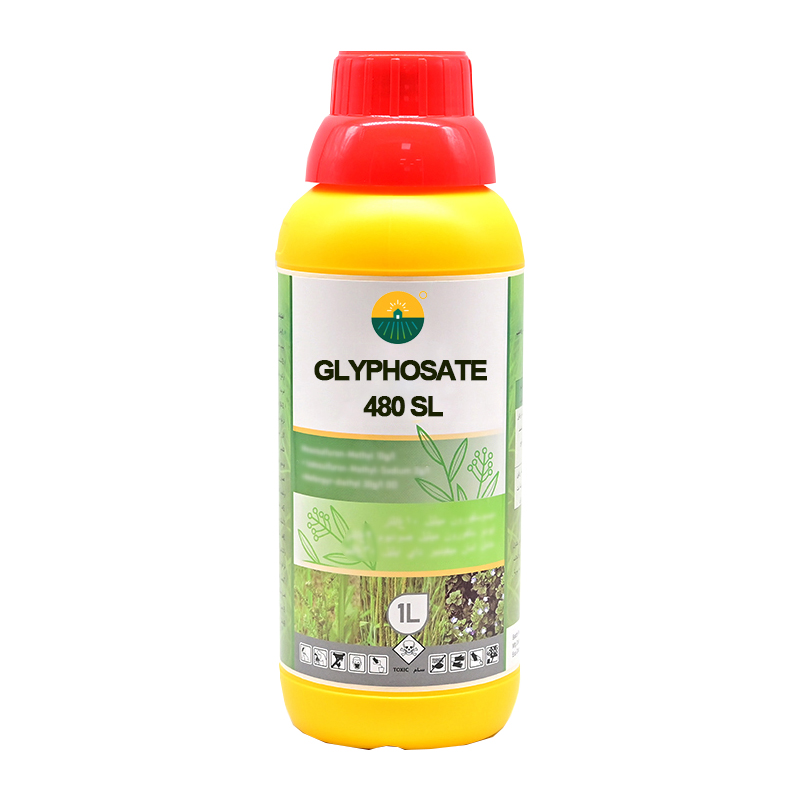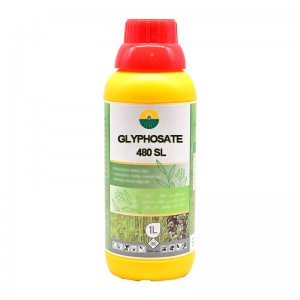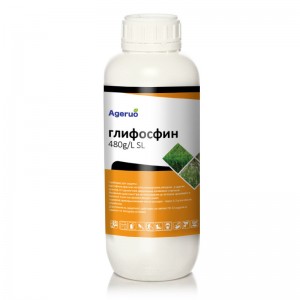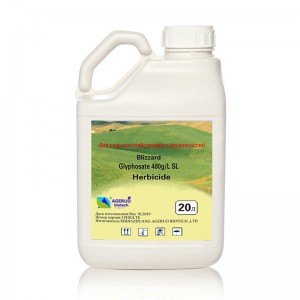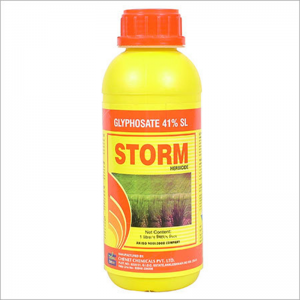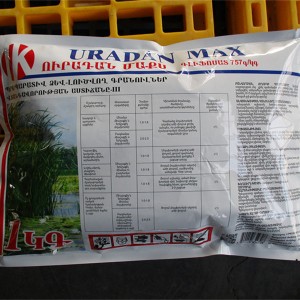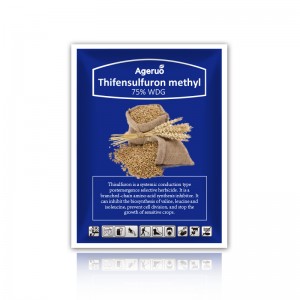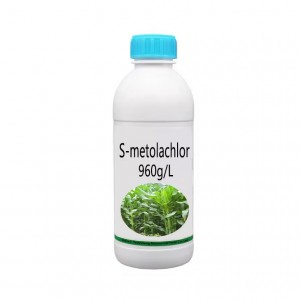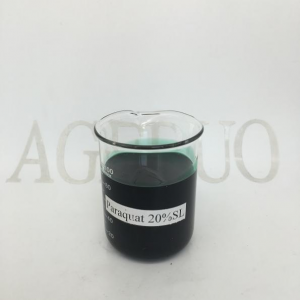Products
POMAIS Herbicides Glyphosate 480g/l SL
Introduction
| Active Ingredient | Glyphosate 480g/l SL |
| Other Name | Glyphosate 480g/l SL |
| CAS Number | 1071-83-6 |
| Molecular Formula | C3H8NO5P |
| Application | Herbicide |
| Brand Name | POMAIS |
| Shelf life | 2 Years |
| Purity | 480g/l SL |
| State | Liquid |
| Label | Customized |
| Formulations | 360g/l SL, 480g/l SL,540g/l SL ,75.7%WDG |
Package
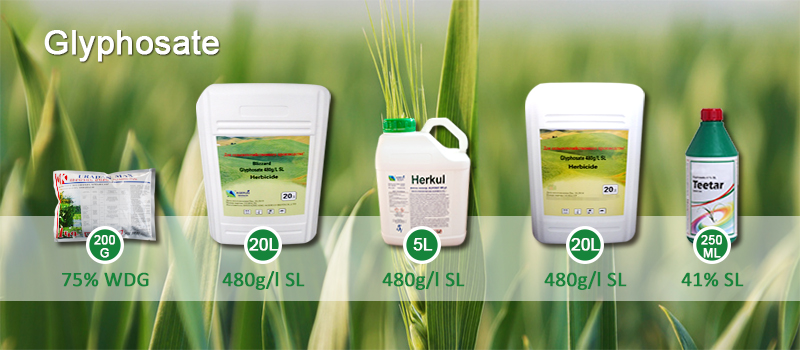
Mode of Action
Glyphosate 480g/l SL (soluble liquid) is a widely used herbicide known for its effectiveness in controlling a broad spectrum of weeds. Glyphosate is a systemic herbicide that works by inhibiting the enzyme 5-enolpyruvylshikimate-3-phosphate synthase (EPSPS). This enzyme is essential for the synthesis of certain amino acids necessary for plant growth. By blocking this pathway, glyphosate effectively kills the plant. Due to the different sensitivity of various weeds to glyphosate, the dosage is also different. Generally broad-leaved weeds are sprayed in the early germination or flowering period.
Related reading: 2, 4-D metsulfuron methyl or glyphosate: What’s the difference?
Glyphosate is widely used in rubber, mulberry, tea, orchards and sugarcane fields to prevent and control plants in more than 40 families such as monocotyledonous and dicotyledonous, annual and perennial, herbs and shrubs. For example, annual weeds such as barnyard grass, foxtail grass, mittens, goosegrass, crabgrass, pig dan, psyllium, small scabies, dayflower, white grass, hard bone grass, reeds and so on.
Suitable Crops:

Act on these Weeds:

Benefits
Broad-Spectrum Control: Effective against a wide range of annual and perennial weeds, including grasses, sedges, and broadleaf weeds.
Systemic Action: Absorbed through the foliage and translocated throughout the plant, ensuring complete kill, including the roots.
Non-Selective: Useful for total vegetation control, ensuring all plant types are managed.
Environmental Persistence: Relatively low soil residual activity, allowing for flexibility in crop rotation and planting schedules.
Cost-Effective: Often considered an economical option for weed management due to its broad-spectrum activity and effectiveness.
Uses
Agriculture:
Pre-Planting: To clear fields of weeds before planting crops.
Post-Harvest: To manage weeds after crops have been harvested.
No-Till Farming: Helps manage weeds in conservation tillage systems.
Perennial Crops: Used around orchards, vineyards, and plantations to control undergrowth.
Non-Agricultural:
Industrial Areas: Weed control in railways, roadways, and industrial sites.
Residential Areas: Used in gardens and lawns to manage unwanted vegetation.
Forestry: Helps in site preparation and controlling competing vegetation.
Using Method
Method: Applied as a foliar spray using ground or aerial equipment. Care should be taken to achieve good coverage of the target weeds.
Dosage: Varies depending on the weed species, growth stage, and environmental conditions.
Timing: For best results, glyphosate should be applied to actively growing weeds. Rainfastness generally occurs within a few hours, but this can vary based on formulation and environmental conditions.
|
Crop Names |
Weeds Prevention |
Dosage |
Usage Method |
|||
|
Non-cultivated land |
Annual weeds |
8-16 ml/Ha |
spray |
|||
Precaution:
Glyphosate is a biocidal herbicide, so it is important to avoid contaminating crops when applying it to avoid phytotoxicity.
In sunny days and high temperatures, the effect is good. You should spray again in case of rain within 4-6 hours after spraying.
When the package is damaged, it may agglomerate under high humidity, and crystals may precipitate when stored at low temperatures. The solution should be stirred sufficiently to dissolve the crystals to ensure the efficacy.
For perennial vicious weeds, such as Imperata cylindrica, Cyperus rotundus and so on. Apply 41 glyphosate again one month after the first application to achieve the desired control effect.
Precautions
Non-Selective Nature: Since glyphosate is non-selective, it can harm desirable plants if not applied carefully. Shielded or directed sprays are recommended near sensitive crops.
Environmental Concerns: While glyphosate has a relatively low persistence in soil, there are ongoing concerns about its impact on non-target species, particularly aquatic ecosystems if runoff occurs.
Resistance Management: Repeated and exclusive use of glyphosate has led to the development of resistant weed populations. Integrated weed management strategies, including the use of alternative herbicides and cultural practices, are recommended.
Health and Safety: Applicators should wear protective clothing and equipment to prevent skin and eye contact. Proper handling and storage are crucial to prevent accidental exposure.
Why Choose US
We supply varies of products with design,production,exporting and one stop service.
OEM production can be provided based on customers’ needs.
We cooperate with customers all over the world, ans provide pesticide registration support.
FAQ
How do you guarantee the quality?
From the beginning of the raw materials to the final inspection before the products are delivered to the customers, each process has undergone strict screening and quality control.
What's the delivery time?
Usually we can finish the delivery 25-30 work days after contract.

